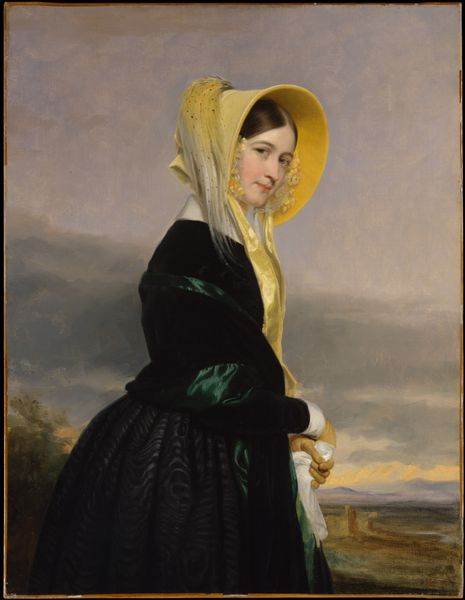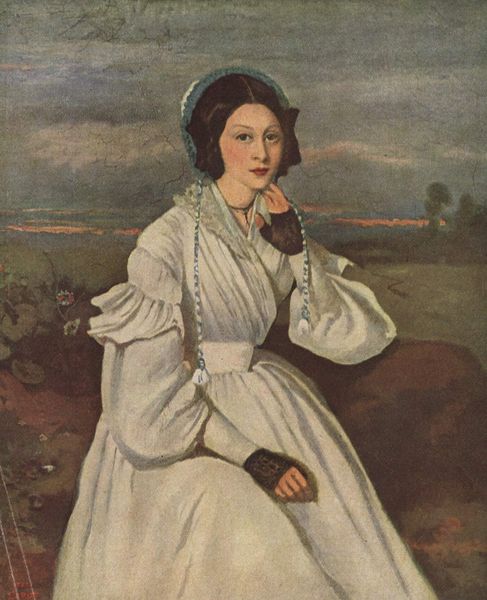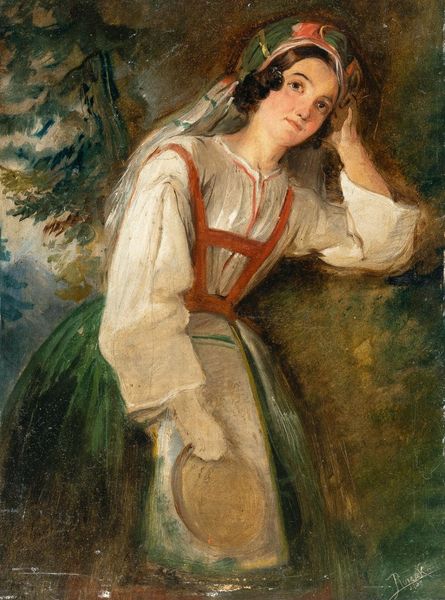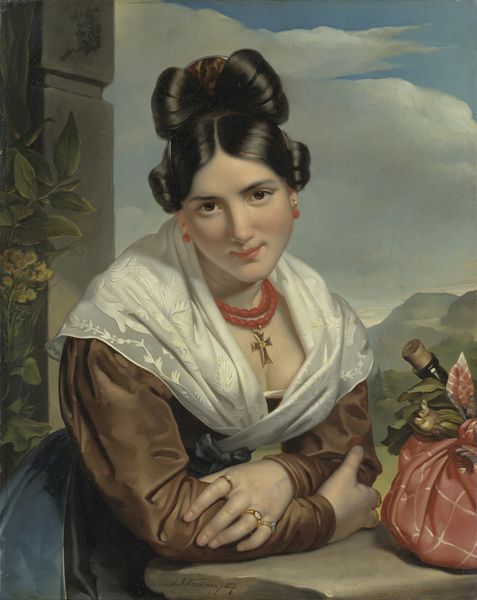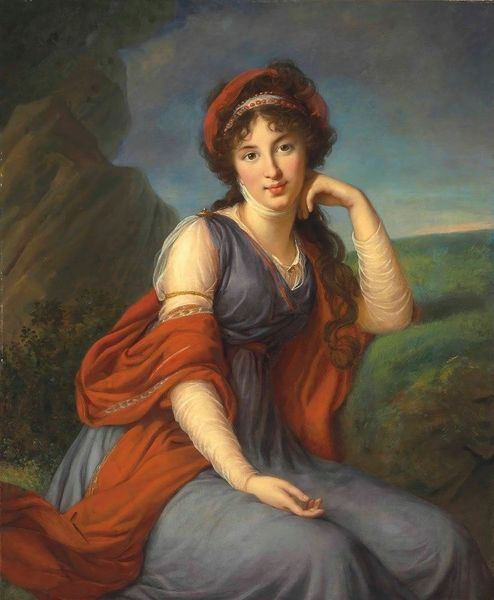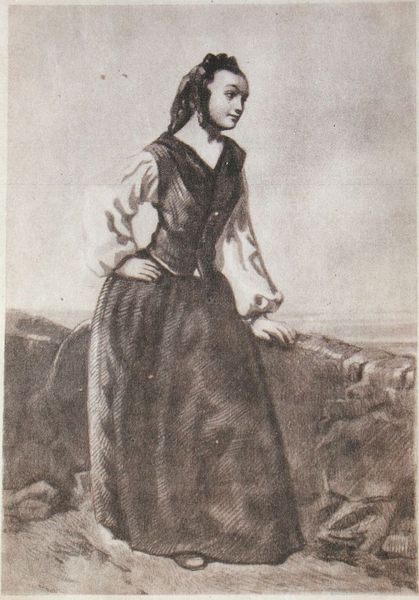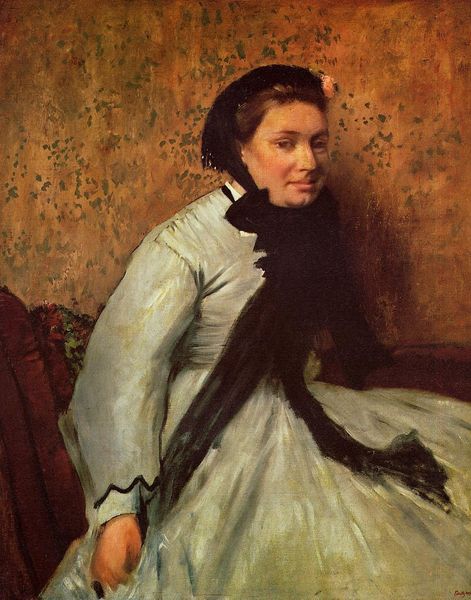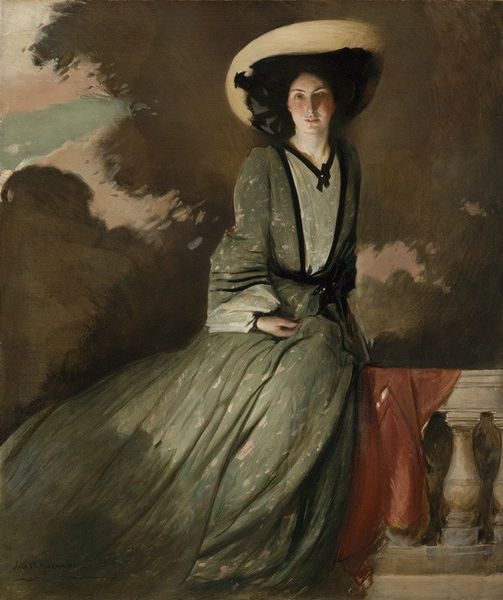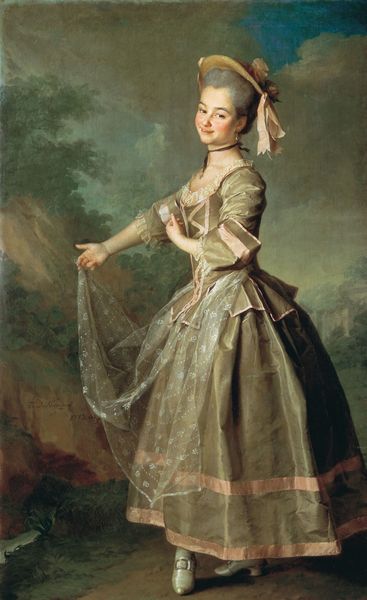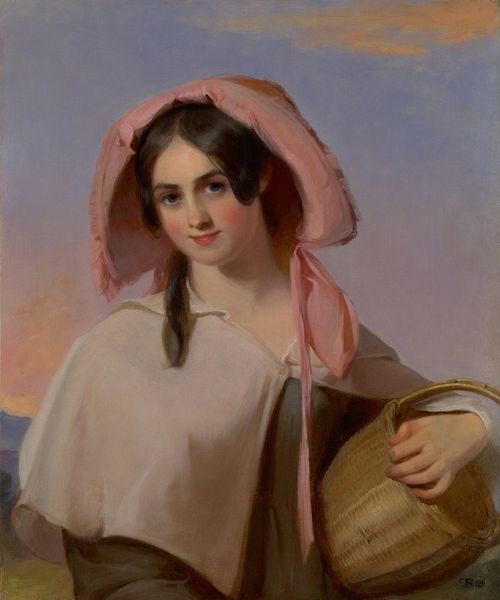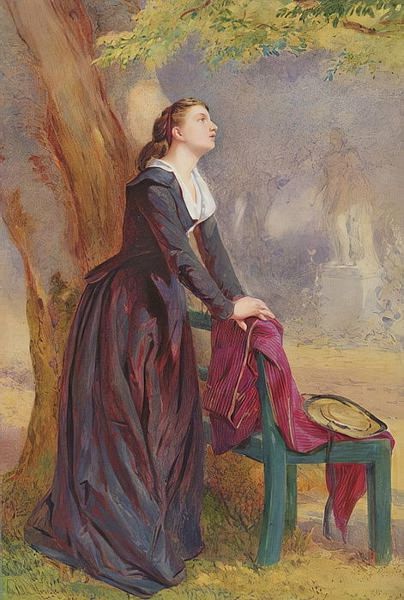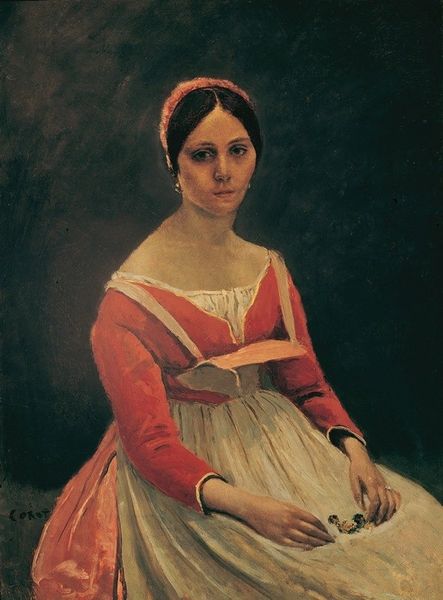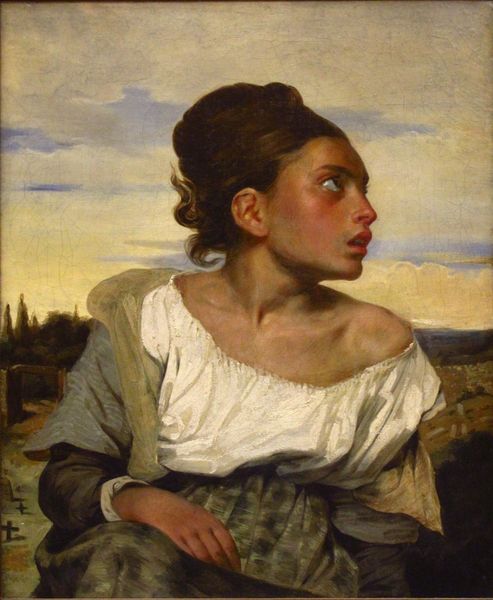
#
portrait
#
oil painting
#
portrait reference
#
portrait head and shoulder
#
animal portrait
#
costume
#
animal drawing portrait
#
portrait drawing
#
facial portrait
#
lady
#
portrait art
#
female-portraits
#
fine art portrait
#
digital portrait
Dimensions: 34 x 26 cm
Copyright: Public domain
Editor: This is Corot's "Woman with Mandolin," painted in 1828. There's a quiet thoughtfulness to her gaze. What strikes you most about this portrait? Curator: It's crucial to consider this within the context of early 19th-century portraiture and the Romantic movement. Corot departs from the formal, idealized representations common at the time, presenting us with what appears to be a more intimate, perhaps even radical depiction of womanhood. Notice how her gaze deviates from the viewer, a subtle rebellion against the male gaze dominant in art history. Do you see how her clothing alludes to traditional folk attire? Editor: Yes, it feels less like a commissioned portrait and more like… a real person. The costume does look rather unusual, in the peasant style. Curator: Exactly. The deliberate choice to portray her in such garb is very telling, given the historical context and socio-political significance. It emphasizes an engagement with, and perhaps a valorization of, working-class identity. The mandolin itself hints at artistry, creativity, possibly connecting the subject to traditions marginalized by the dominant cultural narrative. Editor: That's fascinating; I hadn’t thought of it in terms of class and cultural identity. Curator: It challenges conventional power dynamics within portraiture. By decentering the male perspective, Corot invites us to question who is seen and how they are seen. Do you agree that this woman embodies this radical idea? Editor: It gives me a lot to think about, seeing this familiar kind of art, portraiture, but now understanding that there is something very unconventional happening. Curator: Indeed, her quiet presence speaks volumes. And understanding such socio-political dynamics provides us new tools to interpret Corot's work beyond formalistic readings.
Comments
No comments
Be the first to comment and join the conversation on the ultimate creative platform.
